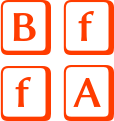 We’re delighted to share Kathryn Aldridge-Morris’s really interesting answers to Jude’s questions. Learn more about how she wrote her first prize winning story, selected by judge Matt Kendrick ‘Visiting Lenin’s Tomb’, her current writing projects and a great tip for writing flash. The picture shows Kathryn reading one of her stories which was included in the 2023 Flash Fiction Festival Anthology launched in Bath at the beginning of this year.
We’re delighted to share Kathryn Aldridge-Morris’s really interesting answers to Jude’s questions. Learn more about how she wrote her first prize winning story, selected by judge Matt Kendrick ‘Visiting Lenin’s Tomb’, her current writing projects and a great tip for writing flash. The picture shows Kathryn reading one of her stories which was included in the 2023 Flash Fiction Festival Anthology launched in Bath at the beginning of this year.
Read in Full
